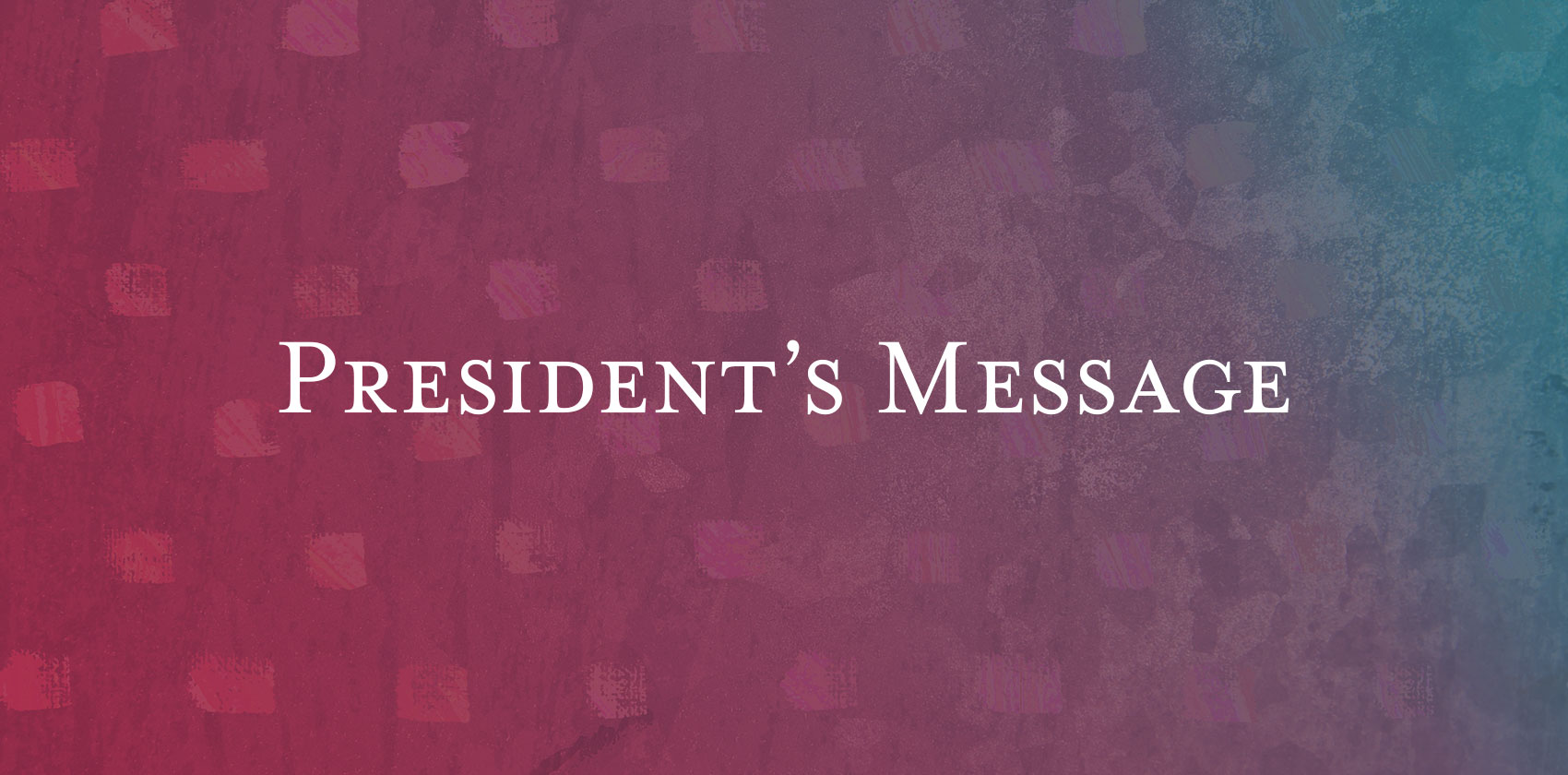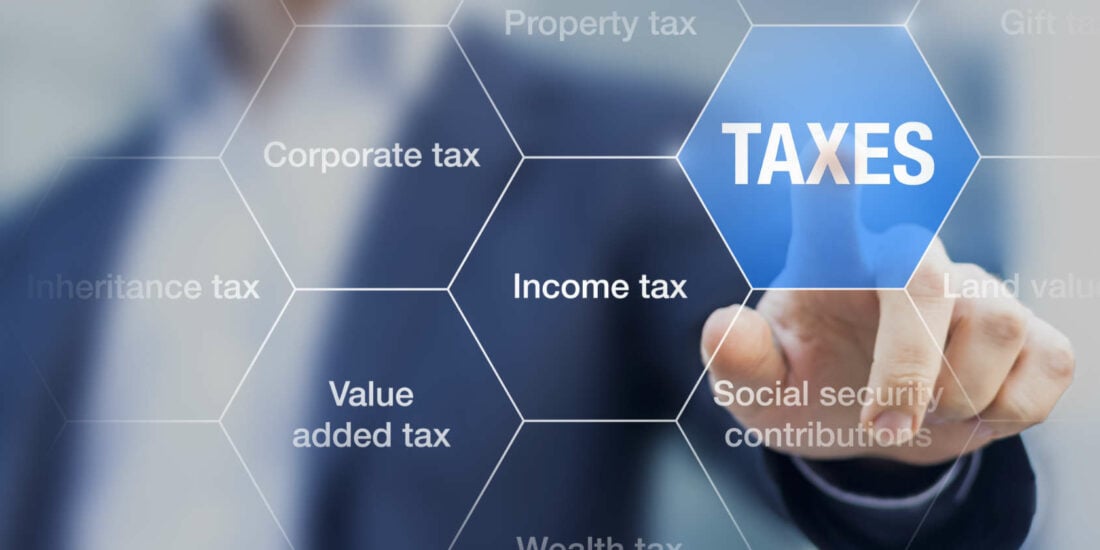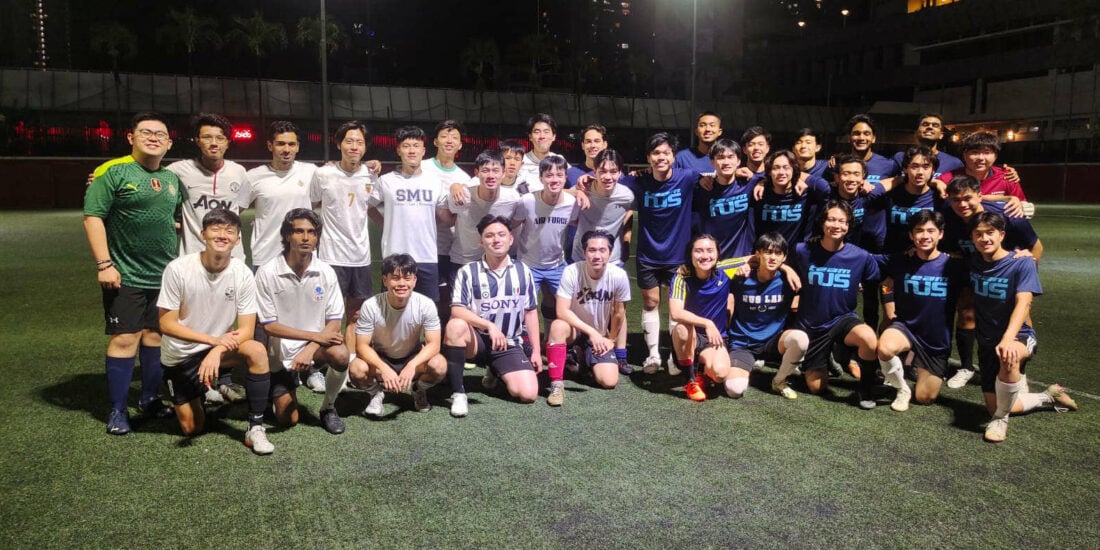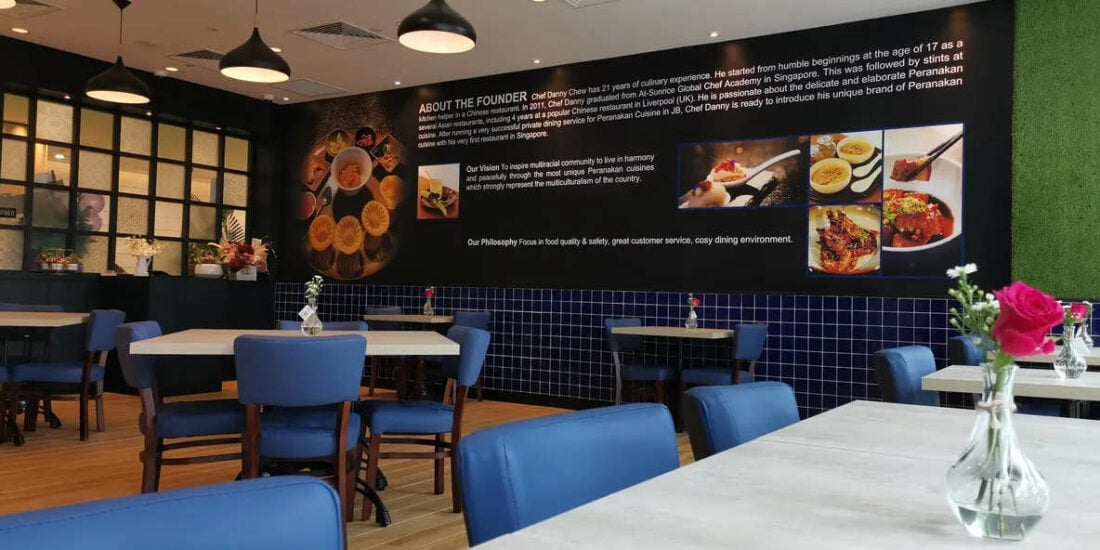
President’s Message
The Lawyer As Healer
It may seem an oxymoron for the legal profession to be viewed as a healing profession. The medical profession is. Counsellors and social workers too are recognised for their valuable work in psychosocial healing.
But lawyers as healers? Almost laughable for some. But this unique facet of our call or vocation is precisely what eminent legal jurists and renowned lawyer-leaders have elucidated in speeches and writings. I had briefly touched on this radical, revolutionary idea in my speech during the Family Justice Practice Forum (reproduced in last month’s Gazette message).
Former Chief Justice Warren Burger of the US Supreme Court in his address at the dedication of the Notre Dame London Law Centre entitled “The Role of the Lawyer Today” said then:
“Doctors still retain a high degree of public confidence because they are perceived as healers. Should lawyers not be healers? Healers not warriors? Healers not procurers? Healers not hired guns?”1 Remarks of Warren E. Burger Chief Justice of the United States at the Dedication of Notre Dame London Law Centre: “The Role of the Lawyer Today” in Volume 59 Issue 1, Notre Dame Law Review
CJ Burger pointed out that the original role of lawyers was healing social conflict and that we really needed to embrace that role once again, One of his listeners in that audience was Dean David Link of Notre Dame Law School. This was a light bulb moment for Dean Link. Describing that moment later:
“I had never heard it put in those terms before … But then I thought back on my own career, and I realized that the most satisfying parts had been when I had been a healer, whether it was when I was a government lawyer, a partner in a big law firm or a law school dean.”
“I remember when Chief Justice Burger died …. and how I wondered who would pursue the concept of lawyer as healer.”
Link answered his own question. In 2002, he became the first president and CEO of the International Centre for Healing and the Law based at the Fetzer Institute in Kalamazoo, Michigan.
CJ Warren Burger was not the original thought leader on lawyers as healers. Robert Bentham CJ of the Georgian Supreme Court observed that the first professions in society were, the clergy, who healed the spirit, the doctor, who healed the body, and the lawyer, who healed the community.
As illustrations, those of us who practising in community law are uniquely placed to heal the community. Those of us practising in family law, ditto for the family. Personal law practitioners in areas such as bankruptcy, personal injuries, etc could heal the person.
An influential former US Bar leader, Dennis Archer, hit the mark with his speech to the Minnesota State Bar2 Speech at the Minnesota State Bar Annual Meeting quoted in Steven Keeva, “Once More, With Healing” at http://www.abajournal.com/magazine/article/once more with healing: “If we approach our life’s work as healers, if we reorient our thinking to take advantage of the power of healing, we can do much good for our clients and others. The mere presence of a lawyer can offer comfort and solace to a person in need of help”.
In his President’s Message in the ABA Journal of 20033 89 ABA Journal 8 (2003) entitled “Lawyer Power”, Dennis Archer expounded on this theme:
“As lawyers, we have the power to make lasting contributions to the betterment of our clients and communities. Our profession is one that heals …
Lawyers have the power to heal the wounds of injustice, to right wrongs, and to ensure that they never happen again. Lawyers often help people when they are most vulnerable and troubled. It is in those times of pain and confusion that clients need us the most. We are counsellors, problem-solvers and even peacemakers. …
We may not have the power to heal the body or spirit. But what body can move freely in an unjust society? What spirit can soar under the yoke of oppression, discrimination or indignity? We are the healers of injustice.”
Dennis Archer touched on indirect healing as lawyers heal injustice. In this piece, I touch on more direct ways of healing include conflict resolution and peacemaking.
On the theme of peacemaking, former US President Abraham Lincoln wrote the following4 Abraham Lincoln, Notes for Law Lecture in II Complete Works of Abraham Lincoln 142 (J. Nicolay & J. Hay ed. 1894):
“Discourage litigation. Persuade your neighbours to compromise whenever you can. Point out to them how the nominal winner is often a real loser …in fees, expenses and waste of time. As a peacemaker, the lawyer has a superior opportunity of being a good man. There will still be business enough.”
In similar vein, Gandhi in his autobiography is quoted as follows:
“… I had learnt the true practice of law. I had learnt to find out the better side of human nature and to enter men’s hearts. I realized that the true function of a lawyer was to unit parties riven asunder. The lesson was so indelibly burnt into me that a large part of my time during the twenty years of my practice as a lawyer was occupied in bringing about private compromises of hundreds of cases. I lost nothing thereby – not even money, certainly not my soul.”5 Gandhi, An Autobiography, (1959) at 97
Closer to home, the Honourable the Chief Justice Sundaresh Menon emphasized the role of the family lawyer as peacemaker in his Keynote Address during the Family Justice Practice Forum this year:
“10. Around the world, there has been growing awareness for some time that lawyering in family work should emphasise the important role of lawyers as problem solvers, working collaboratively in a multidisciplinary environment, with the objective of achieving outcomes that are beneficial to all those involved in or affected by the dispute.
11. In line with this, Professor John Lande has observed that in America, despite the public image of family lawyers as fomenters of conflict, the empirical research indicates that most family lawyers in fact endeavour to be reasonable. They dampen legal conflict far more than they exacerbate it and generally try to avoid adversarial action. Increasingly, they have looked beyond the traditional paradigm to embrace interest-based negotiation and creative problem-solving approaches that focus on the true interests of the affected clients and families. Other family lawyers envision the role of the family lawyer as a “peacemaker” believing that what they do, day after day, is to be “present” for their clients and to work for peace for them and their families.”
CJ Burger in his illuminating Notre Dame lecture described this facet of healing by lawyers as the highest service lawyers can have. We strive to resolve the dispute in the interests of the client. But as a last resort you are in court. In a large number of cases, I would respectfully suggest that this could even give you an added edge. At that hearing, you would carry conviction and credibility of reasonableness and a problem-solving disposition. You ended up in court as a last resort having exhausted alternative dispute resolutions. Would you prefer that reputation or be known as a trigger happy litigator who goes to court as a first resort with an ethos of “I’ll see you in court.”?
I have shared about conciliation in the July issue of the Gazette. The second model of conciliation touched on there (not visited here) is relevant to this broader theme of the lawyer as healer.
Patrick Andrews, a US lawyer, in an article titled “The Lawyer As Healer?”6 Patrick Andrews, “The Lawyer as healer ?” (June 29 2017) at http://www.newforestadvisory.com/the-lawyer-as-healer published on 29 June 2017 describes his encounter with an 87-year-old man who works with very young babies. The octogenarian explained to the author that babies need two things: to be heard and to be held. His job is to treat the “baby” within everyone who presents him or herself to him. He pays attention to making the person feel heard and held. Holding here is a broader idea than physical touch.
Patrick introspects:
“Could I help my clients feel held and heard in a similar way, and thus in some way heal them?
Typically people come to me with a question or issue, something that’s troubling them. Their first need, I notice, is to be heard. It is rare in our society to be truly listened to. Mostly, when you talk to people they are waiting for you to finish so that they can say what they want to say. So, this is something I can do – I can be silent, and listen.
Secondly, they are often seeking re-assurance. They are unfamiliar with the law, and are worried of taking a wrong step. The law can be mystifying and intimidating. It also carries power – behind the law lies the whole might of the state. Not uncommonly, lawyers play on this. They weave a mystique around the law, perhaps to justify their exorbitant fees, or simply because they don’t quite understand it themselves. The best lawyers I have worked with cut through the verbiage – they clarify and don’t confuse.
Because I have worked with the law for so many years, I can usually provide the re-assurance my clients need. I might offer a remedy (typically a contract, or a tweak to a governing document, or a suggested course of action) – something tangible people can go away with.”
We may not always be required to give pat answers and formulaic solutions or even give the client a legal prescription. Sometimes, instead of the need to provide answers, could we be better off by journeying with the client on a joint enquiry? To combine energies, share wisdom, exchange perspectives and come up with the right answers together in some cases. There are appropriate cases in which clients need to “own” the solution to their problem as Patrick shares. Many of us know from our own matters that the clients themselves weigh in with non-legal considerations (cost-benefit analysis, priorities, time considerations and so on). It is a humbling truism that sometimes even our wisest of legal advice may only be part of a chorus of counsel.
Patrick Andrews ends off his piece by describing “healing work [as] about the most rewarding work we can do.” And less and less does it feel like the practice of law. It simply feels like being human, in the company of others.”
CJ Burger in his ground breaking Notre Dame address shared three prescriptions on how to be a lawyer-healer:
- an emphasis on the moral basis of law;
- paying attention to professional ethics; and
- maintaining standards of civility and decorum in the courtroom and also in the boardroom
All these three prescriptions are loaded points and deserve separate treatment in their own right.
The International Centre for Healing and the Law started by Dean Link is dedicated to furthering the concept of the lawyer as healer. It champions the proposition that there are preferred options to the adversarial approach that can benefit both clients and lawyers.
“We may be used to doing things a certain way, but the truth is that most people don’t want to attack the dignity of others,” Link says. “It’s essential that we realize that becoming a warrior is really just one way of doing things. Lawyers and the public need to be aware of more humane ways, ways that bring peace to people’s lives.”
“Lawyers need to know that their clients want peace and harmony in their lives, and that they need to facilitate that, rather than exacerbate the problems. The real goal should be maintaining dignity on both sides, whether the parties are corporations or married couples.”7 Quoted in Steven Keeva, “Once More, With Healing” at http://www.abajournal.com/magazine/article/once more with healing
Link shares an interesting anecdote from his own practice. It is a great illustration for corporate lawyers reading this and wondering how to apply a healing approach to your own calling:
“I was working for a large Chicago law firm, and I went down to a small town to liquidate a successful corporation. They were liquidating because the owners, who were brothers, disagreed on investment strategies.
“After listening to them, I decided that liquidation wasn’t the best thing to do. Instead, I divided the company into parts based on functions. It was a way to save the corporation and keep it together. If I had liquidated it, it would have ended the problem. But by talking them into it the way I did, we saved the company and the relationships. It was the healing alternative. I didn’t have to do it. I would have earned the fee either way. But it was the right thing to do for that family and for that company.”8 Quoted in Steven Keeva, “Once More, With Healing” at http://www.abajournal.com/magazine/article/once more with healing
Restructuring and insolvency lawyers often work towards restructuring options to “heal” the corporation from its distress.
The idea of lawyers as healers is not just a “nice to do it” idea. A lofty and unrealistic concept better suited for Thomas More’s Utopia.
Angie Martell (a US attorney and mediator) in an insightful piece titled “Practicing from the Heart: Lawyers as Peacemakers, Problem Solvers and Healers of Conflict”9 http://www.crazywisdomjournal.com/featuredstories/2014/4/29/practicing-from-the-heart-lawyers-as-peacemakers-problem-solvers-and-healers-of-conflict puts it in direct and disruptive terms in her own narrative that points out practising the alternative:
“The old worldview of how things have always been done doesn’t work. Many have declared the legal system “broken,” citing the time, money, effort, and unforeseen emotional costs of traditional litigation. Moreover, the general experience of litigants has been negative as they exit the process often worse off than when they entered it. Lawyers too are unhappy with the way the system functions; industry studies show widespread job dissatisfaction and stress-related health problems. Like many other practitioners and businesses, some lawyers are starting to explore applying holistic approaches to the practice of law by looking at legal solutions with a different lens, changing the discourse, and transforming the practice of law from an adversarial practice to a more preventive and collaborative one. The holistic approach focuses on the whole person and the whole problem in order to find more healthy and sustainable legal solutions.”
She says that holistic law practitioners see conflicts as opportunities for growth.
“We often look inward to become whole ourselves in order to best assist our clients in using the legal process to find wholeness. Holistic law is “big picture” thinking or consideration and analysis of circumstances beyond the obvious issue. It looks at the lawyer’s role, the client’s role in the problem and solution, and the impact of the problem and solution on the community.
It is about looking at legal solutions with a different lens. Not every legal problem is the same. Not every client is the same. As a lawyer, “If the hammer is your only tool in your box, then every problem begins to look like a nail.”
The umbrella of holistic law is broad and multifaceted. … It calls for lawyers to listen intentionally and deeply in order to gain a complete understanding of a client’s issues; to acknowledge the opportunity in conflict; to honor and respect the dignity and integrity of each individual; to encourage compassion, reconciliation, healing, forgiveness, and letting go, and, most important, to enjoy the practice of law.”
She shares that in her practice, she may consult or involve other professionals (non-legal for the most part) who can help her clients navigate the emotional or financial issues they face, either during the case or after the cases. These include counsellors, therapists, mediators, financial specialists and child specialists.
“Since compassion is the cornerstone of this practice, it’s about encouraging clients to see that all legal challenges are intimately connected with fundamental issues about the meaning of life. And that specific problems are invariably dealt with better from a broader perspective.”
I believe that a paradigm shift is needed in legal practice from the perspectives of both client and lawyer. A revolution that will change the nature of how the law is used and how it operates. As Angie Martell succinctly puts it: “More and more people want to find solutions that are more journey-oriented rather than destination-based. They are planting the seeds with the belief that problems can and should be resolved not with confrontation and game-playing but with care, awareness and collaboration.”
Will you embrace the healing dimension of lawyering in your practice?
Endnotes[+]
| ↑1 | Remarks of Warren E. Burger Chief Justice of the United States at the Dedication of Notre Dame London Law Centre: “The Role of the Lawyer Today” in Volume 59 Issue 1, Notre Dame Law Review |
|---|---|
| ↑2 | Speech at the Minnesota State Bar Annual Meeting quoted in Steven Keeva, “Once More, With Healing” at http://www.abajournal.com/magazine/article/once more with healing |
| ↑3 | 89 ABA Journal 8 (2003) |
| ↑4 | Abraham Lincoln, Notes for Law Lecture in II Complete Works of Abraham Lincoln 142 (J. Nicolay & J. Hay ed. 1894) |
| ↑5 | Gandhi, An Autobiography, (1959) at 97 |
| ↑6 | Patrick Andrews, “The Lawyer as healer ?” (June 29 2017) at http://www.newforestadvisory.com/the-lawyer-as-healer |
| ↑7 | Quoted in Steven Keeva, “Once More, With Healing” at http://www.abajournal.com/magazine/article/once more with healing |
| ↑8 | Quoted in Steven Keeva, “Once More, With Healing” at http://www.abajournal.com/magazine/article/once more with healing |
| ↑9 | http://www.crazywisdomjournal.com/featuredstories/2014/4/29/practicing-from-the-heart-lawyers-as-peacemakers-problem-solvers-and-healers-of-conflict |
Tags:
L2
Gregory Vijayendran, SC
Partner, Dispute Resolution
Rajah & Tann Singapore LLP
Immediate Past President
The Law Society of Singapore
Partner, Dispute Resolution
Rajah & Tann Singapore LLP
Immediate Past President
The Law Society of Singapore






